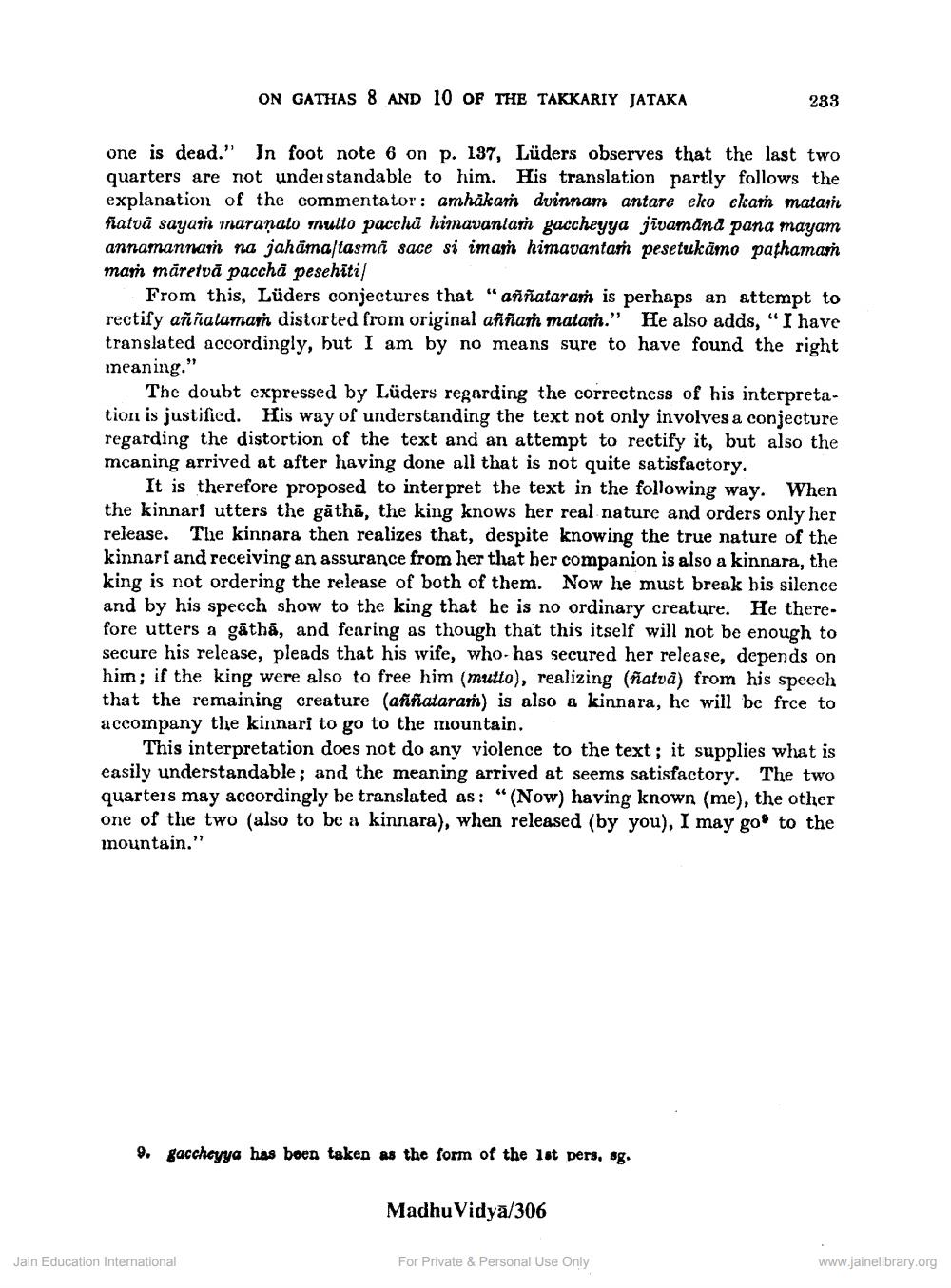________________
ON GATHAS 8 AND 10 OF THE TAKKARIY JATAKA
283
one is dead." In foot note 6 on p. 137, Lüders observes that the last two quarters are not understandable to him. His translation partly follows the explanation of the commentator: amhäkam dvinnam antare eko ekam matar hatvà sayam maranato multo paccha himavantaṁ gaccheyya jīvamānā pana mayam annamannam na jahāma/tasmā sace si imas himavantam pesetukāmo pathamar mam māretvā paccha pesehitis
From this, Lüders conjectures that "aññataran is perhaps an attempt to rectify aññatamam distorted from original aññan matar.” He also adds, “I have translated accordingly, but I am by no means sure to have found the right meaning."
The doubt expressed by Lüders regarding the correctness of his interpretation is justificd. His way of understanding the text not only involves a conjecture regarding the distortion of the text and an attempt to rectify it, but also the mcaning arrived at after having done all that is not quite satisfactory.
It is therefore proposed to interpret the text in the following way. When the kinnars utters the găthā, the king knows her real nature and orders only her release. The kinnara then realizes that, despite knowing the true nature of the kinnari and receiving an assurance from her that her companion is also a kinnara, the king is not ordering the release of both of them. Now he must break bis silence and by his speech show to the king that he is no ordinary creature. He therefore utters a gāthā, and fearing as though that this itself will not be enough to secure his release, pleads that his wife, who has secured her release, depends on him; if the king were also to free him (mutto), realizing (ñatva) from his speech that the remaining creature (afiñataram) is also a kinnara, he will be free to accompany the kinnari to go to the mountain.
This interpretation does not do any violence to the text; it supplies what is easily understandable; and the meaning arrived at seems satisfactory. The two quarters may accordingly be translated as: "(Now) having known (me), the other one of the two (also to be a kinnara), when released (by you), I may go to the inountain."
9. gaccheyya has been taken as the form of the 1st pers, sg.
Madhu Vidya/306
Jain Education International
For Private & Personal Use Only
www.jainelibrary.org




